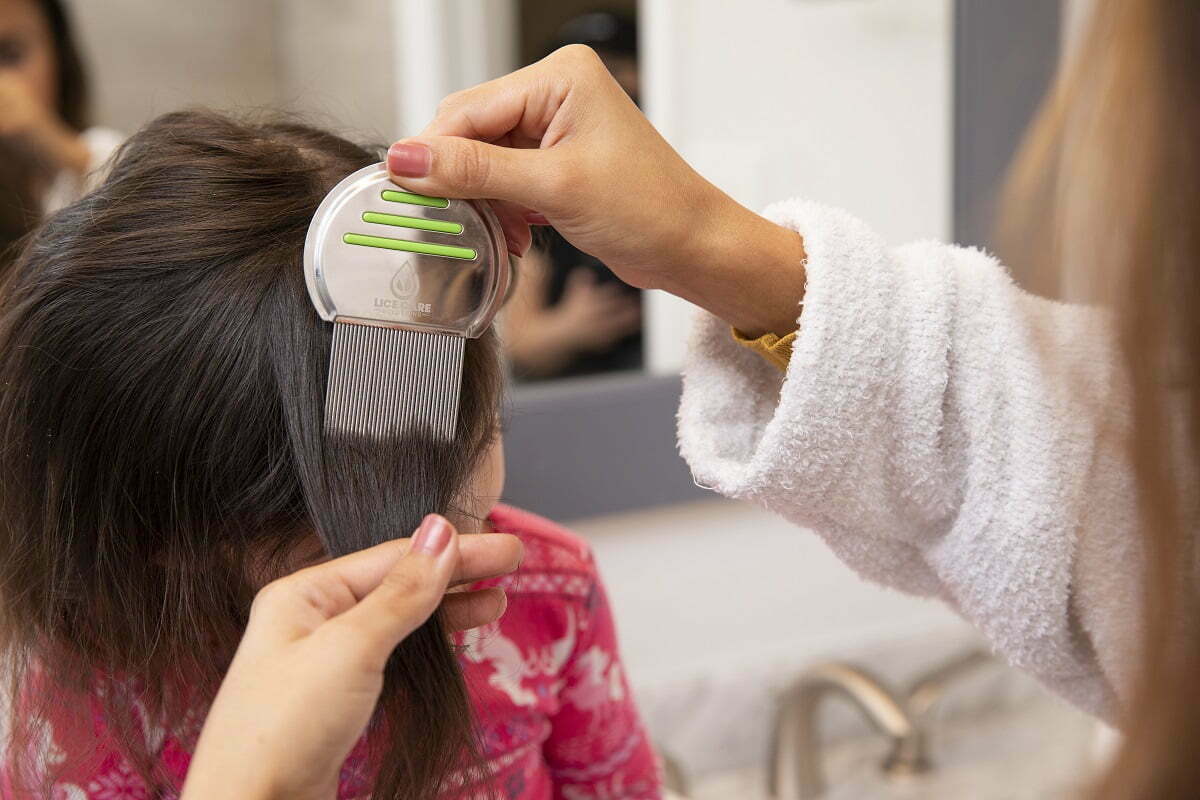Table of Contents
Lice are tiny insects that can live in human hair or fur. They feed on blood from the scalp and neck area of their host and lay eggs called “nits,” which stick to hair shafts. Lice infestations are common among children but can also affect adults too. Symptoms may include itching, red bumps on the scalp or neck area, and tiny white specks (the nits) attached to individual hair strands.

Head lice are tiny insects that can infest humans’ scalps and hair. They spread quickly from one person to another through close contact or by sharing personal items such as combs, brushes, hats, or towels. If you or someone you know has head lice, treating the infestation promptly is essential to prevent the lice from spreading further.
The following steps are involved in a detailed head lice treatment:
- Diagnosis: A healthcare professional can confirm the presence of head lice by examining the scalp and hair for live lice or nits (lice eggs) using a fine-toothed comb.
- Medication: Several over-the-counter and prescription drugs are available to treat head lice. These medications are usually applied directly to the hair and scalp and left on for a specific time before rinsing out. Follow the instructions on the label carefully and use the medication as directed.
- Combing: After applying the medication, it’s essential to use a fine-toothed comb to remove any remaining lice or nits from the hair. This should be done every day for at least two weeks after treatment to remove all lice and nits.
- Cleaning: Wash all clothing, bedding, and personal items that may have come into contact with the infested person in hot water and dry on high heat. Items that cannot be washed should be sealed in a plastic bag for at least two weeks to suffocate any remaining lice.
- Prevention: To prevent future infestations, avoid sharing personal items such as combs, brushes, hats, or towels. Also, check your hair regularly for signs of head lice, especially if you have been in close contact with someone with head lice.
Does Insurance Cover Lice Treatment?
Typical medical insurance does not cover lice treatment 100% because it is not considered a severe medical condition. However, lice treatment is an eligible over-the-counter (OTC) item with a health savings account (HSA), a flexible spending account (FSA), and a health reimbursement arrangement (HRA).
Lice treatments are often not covered by typical health insurance plans for a few reasons:
- Lice infestations are not considered a serious medical condition: Lice are generally considered a nuisance rather than a severe health threat. While they can cause itching, discomfort, and potential secondary infections due to scratching, they do not transmit diseases or pose significant risks to overall health. As a result, insurance companies may not view lice treatments as medical necessities and do not cover them.
- Over-the-counter treatments are widely available: Many lice treatments can be purchased without a prescription at drugstores and supermarkets. In addition, these treatments are generally affordable and easy to access, so insurance companies may not see a need to provide coverage for them.
- Lice infestations are relatively easy to treat. Treatments are typically straightforward and can be self-administered at home. As a result, insurance companies may not cover them because they are considered easy to manage without professional medical intervention.
- Cost containment: Insurance companies aim to control costs and keep premiums low for their customers. By excluding coverage for non-essential treatments, like lice removal, insurers can focus on providing a range of more critical healthcare needs.
Remember that insurance plans can vary widely, and some may cover lice treatments under specific circumstances, such as when over-the-counter medicines have failed and prescription medication is required. Therefore, it is essential to understand your insurance plan and contact your provider for details about your coverage.
How much does lice treatment cost using FSA (Example)?
Over-the-counter (OTC) insurance and flexible spending accounts (FSA) are different mechanisms that help with healthcare-related expenses. OTC insurance covers the cost of certain over-the-counter products, while an FSA is a pre-tax account that you can use to pay for eligible healthcare expenses.
For lice treatment, if your OTC insurance covers the cost of the product, you may not need to use your FSA. However, coverage for lice treatments can vary based on your insurance plan, so it is essential to check with your provider to confirm whether the treatment is covered.
If your OTC insurance does not cover the lice treatment, you can use your FSA to pay for it. In this case, you would be paying with pre-tax dollars, effectively lowering the amount of money you spend on the treatment by reducing your taxable income. The exact percentage you save will depend on your tax bracket.
For example, if you are in the 25% tax bracket and the lice treatment costs $50, using your FSA would save you 25% of the cost, or $12.50. This would effectively reduce the amount you pay to $37.50.
Remember that this is just an example; the actual percentage you save will depend on your specific tax bracket and other financial factors. Be sure to consult your tax advisor or insurance provider for personalized advice.
How much does lice treatment cost using the HSA (example)?
If you have over-the-counter (OTC) insurance and a Health Savings Account (HSA), the percentage you pay for lice treatment depends on your OTC insurance coverage and tax savings from using your HSA.
- OTC insurance: If your insurance covers the cost of lice treatment, you may not need to use your HSA. Coverage for lice treatments can vary based on your insurance plan, so you must check with your provider to confirm whether the treatment is covered.
- Health Savings Account (HSA): If your OTC insurance does not cover the lice treatment or only covers a portion of the cost, you can use your HSA to pay for the remaining balance. HSA contributions are pre-tax, meaning you do not pay taxes on the money you put into your HSA. You can use your HSA to pay for eligible healthcare expenses, including lice treatments.
Since you are in the 12% tax bracket, the percentage you pay for the lice treatment would be reduced by the tax savings from using pre-tax HSA dollars.
For example, if the lice treatment costs $50 and you need to use your HSA to cover the total cost, your tax savings would be 12% of the price, or $6. This would effectively reduce the amount you pay to $44.
Remember that this is just an example; the actual percentage you save will depend on your specific tax bracket and other financial factors. Be sure to consult your tax advisor or insurance provider for personalized advice.
Lice Treatment and Insurance
When it comes to treating lice, various methods are available, such as over-the-counter medications, prescription medications, and home remedies, such as mayonnaise or olive oil used overnight with a shower cap and combing through the hair with a special nit comb. Some people prefer professional lice removal services performed by specialists who use specialized equipment to successfully remove all lice and nits from an individual’s hair follicles without leaving behind any traces of eggs or larvae that can lead to another infestation later.
So now that we know what lice are and how they can be treated let’s look at whether health insurance plans typically cover these treatments. Generally speaking, most health insurance plans will not cover costs associated with over-the-counter medications; however, they may provide some coverage if prescription medication is required. In addition, some insurers may also offer a range of professional services when medically necessary; this means that if your case is severe enough, your doctor may be able to request coverage for professional treatment from your insurer, which could reduce overall costs significantly. Furthermore, some insurers also provide a range of home remedies, such as combing through the hair with a nit comb to reduce costs associated with purchasing specially designed products for removing lice from individuals’ scalps and necks.
Ultimately, deciding whether or not your health insurance plan covers any form of lice treatment depends on your specific provider; however, it is essential to remember that even if your insurer does not provide any coverage for treatments related to lice infestations, there are still plenty of ways you can get rid of them without breaking the bank such as using home remedies or purchasing specially designed products meant for removing them from individuals’ scalps and necks area without leaving behind any traces of eggs or larvae that can lead to another infestation later on.
